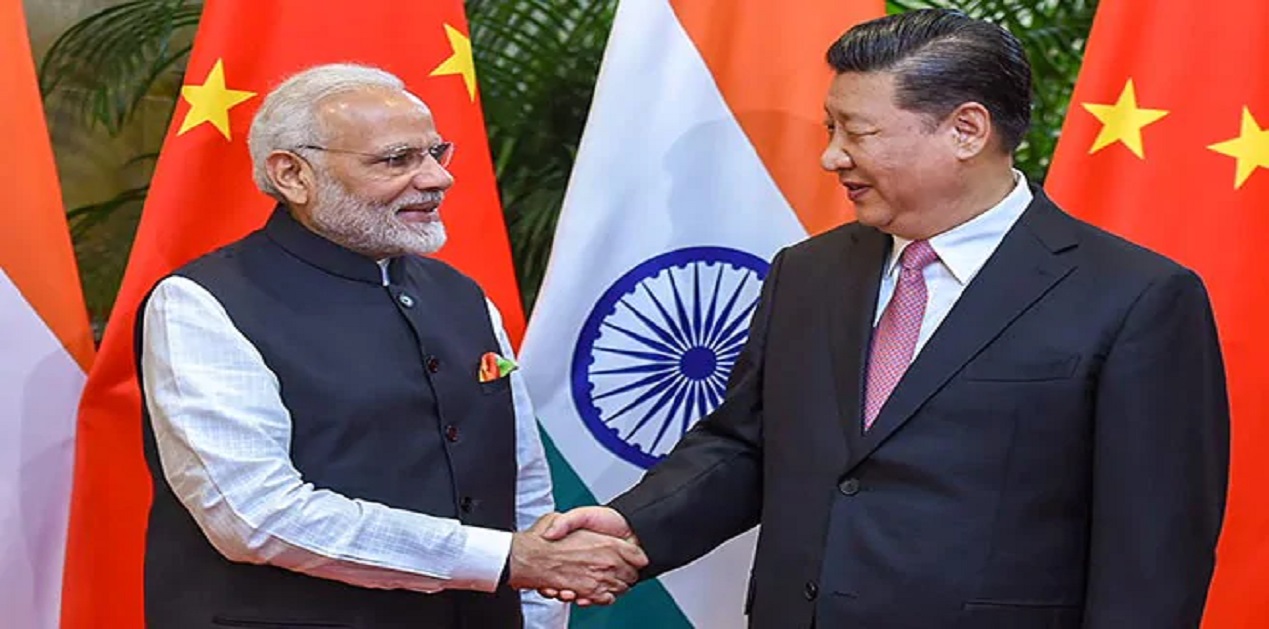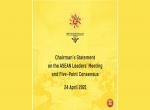In just around a fortnight in mid-October, Chinese President Xi Jinping is scheduled to arrive in India for his second ‘informal’ meeting with Indian Prime Minister Narendra Modi in the ancient coastal town of Mamallapuram near Chennai. Xi Jinping is likely to combine it with a visit to neighbouring Nepal where China has in recent years acquired considerable influence, the pace of which has accelerated since installation of the communist government initially under Prachanda. Developments over the past months, however, make any meaningful progress at the Summit unlikely.
China was keen that the visit takes place as soon as possible after India’s national elections so that Xi Jinping would be the first foreign leader to have a Summit with Indian Prime Minister Narendra Modi and the two would be able to build on their first ‘informal’ meeting held at Wuhan in China. Developments in the interregnum centering especially on India’s robust punitive response to terrorist attacks sponsored by Pakistan and the air strike against the terrorist training camp at Balakot inside Pakistan have, however, dimmed the prospects for the upcoming Summit. China’s support to Pakistan has been overt. Curious too is that Chinese State Councillor and Foreign Minister Wang Yi has not yet visited India. It is unusual for a Chinese Foreign Minister not to personally visit and approve arrangements prior to the Chinese President’s visit. Wang Yi has additionally on two recent occasions - the latest on September 27 at the UN General Assembly - made specific reference to the issue of Kashmir and UN Security Council Resolutions on Kashmir. This raises doubts as to how serious Beijing is about the visit. Chinese and Indian security delegations have, meanwhile, visited Mamallapuram and Chennai.
Around the same period, Wang Yi travelled to Islamabad for the trilateral Afghanistan-Pakistan-China meeting when he held talks with Pakistan's Prime Minister, Army Chief and President. India-Pakistan relations and Kashmir were discussed with Wang Yi assuring Pakistan of China’s support and stressing that the Kashmir issue should be resolved in accordance with the UN Security Resolutions. Reports state too that there has been a marked increase in the number of Chinese military personnel travelling to Pakistan since early this year.
This was followed by Wang Yi's visit over September 14-15 to Kathmandu to prepare for a possible visit by Xi Jinping which, if it materialises, will be the first by a Chinese President to Nepal since 1996! In Kathmandu, Wang Yi is reported to have expressed concern at the large Muslim population and the possibility of their staging embarrassing pro-Uyghur demonstrations during Xi Jinping’s visit. The demonstration by the Tibetans protesting Wang Yi’s visit added to his concern.
Importantly, Chinese President Xi Jinping’s meeting with Prime Minister Modi takes place at a time of mounting difficulties for the Chinese leader. Dissatisfaction with Xi Jinping and his policies is spreading inside China. The country’s economy is shrinking and growth has slowed despite measures to halt the slide. Hundreds of small private enterprises have shut down adding to rising unemployment and the number of protests by laid-off workers has doubled over the previous year. Demobilised and retired military personnel also staged public protests in Beijing last year demanding re-employment, better benefits and ‘respect’. The cost of living has also been rising. Students and academics are disgruntled and respected prominent academics, quite unusually and at personal risk, have gone public with their criticism of Xi Jinping’s policies. The anti-corruption campaign continues to fell hundreds of senior Party, military and government officials widening the circles of the discontented.
The US-China trade war has accentuated Xi Jinping's problems and seriously set back China’s technology sector. US restrictions on the sale of critical components, like laser micro-chips etc., to Chinese hi-technology and telecommunications companies highlighted to China’s leadership how dependent China continues to be on the import of hi-tech components. Despite initial claims that they are equipped to weather the crisis, Chinese companies like Huawei and ZTE are in distress and laying-off employees. Chinese President Xi Jinping's goal of achieving the 'China Dream' by 2021 and 'Made in China-2025' within the time-limits declared at the XIXth Party Congress now appears difficult.
Adding to these problems is the continuing turbulence and sporadic violence in Hongkong, which has challenged the legitimacy of the Chinese Communist Party (CCP)'s rule. Apart from describing the protests as a "colour revolution" instigated by the US and the West and making a few token concessions, China's leadership has thus far taken no substantive action to quell the protests. There are indications of inner-Party differences in the highest echelons of the CCP, which suggest a weakening of Xi Jinping's authority.
China's overt support to Pakistan and recent actions have imposed additional strain on its relations with India. Beijing’s calling for a meeting of the UNSC in support of Pakistan to discuss the amendment of Article 370 by India - an avowedly internal matter clarified as having no repercussion outside the boundary of the state - was avoidable. This was compounded when a Chinese diplomat disingenuously insisted that the meeting had criticised India's action in a statement, which was swiftly denied.
China's official media reactions since Article 370 was amended on August 5, have been uniformly critical, and, additionally raised China’s claims on Tibet and specifically Ladakh. Stating that India “will divide the areas of Aksai Chin and other areas of China’s Xinjiang”, they quoted the Chinese Foreign Ministry spokesman as clarifying “that this practice in India seriously violates China’s territorial sovereignty”! Stressing that it is by no means India’s internal matter, the Chinese media said. “it is a violation of China's territorial sovereignty and damages China's interests. It violates the relevant agreements between the two countries on maintaining peace and tranquillity in the border areas, and the leaders of the two countries on the proper control of disputes”. The articles insisted that the relevant areas “are completely located in China's Tibet and Xinjiang, and … these areas have always belonged to China, and under the actual control of China, they are an inseparable part of Chinese territory”.
Reiterating China’s claim, the official media said, “Ladakh has been Chinese territory since ancient times”. Stating that India has “continuously penetrated into the western section of the Sino-Indian border to infiltrate and create and expand disputes” seriously affecting bilateral relations between the two countries, the articles warned: “If the Indian side does not learn the lesson” it will worsen the border situation, aggravate the border dispute and endanger the peace and tranquillity of the border area. The articles threatened that “the Chinese side will certainly not sit idly by”.
China’ official media has published articles asserting China’s claim over Ladakh earlier too, for example in May 2013 and more recently in May 2019. China also continues to offer India gratuitous "advice" to ease tension with Pakistan and resolve the Kashmir issue. Most recent was that proffered recently by China's Ambassador Sun Weidong who, noticeably, dropped reference to the UNSC resolutions in his interview to the Indian newspaper
There have been other hints of military implications. Earlier in August, China and Pakistan held their largest yet air force exercise, the Shaheen-VIII. Official Chinese military media reporting of the exercise specially highlighted that the People’s Liberation Army Air Force (PLAAF) had for the first time sent its fourth generation J-16 fighter to help train the Pakistan Air Force take on the Rafale fighter aircraft being acquired by India. A report suggests that the air base for the exercise, surrounded by high mountains and jungles, was in China's Gansu province within the operational jurisdiction of the People’s Liberation Army (PLA) Western Theatre Command. This Shaheen exercise was held after the Indian Air Force strike on the 'jihadi' terrorist training camp at Balakot in Pakistan.
Possibly reflecting ongoing discussions within Chinese military circles another official Chinese military media report on September 28 discussed the deployment of PLAAF aircraft. It suggested that a certain number of the PLAAF’s “newly introduced” JH-7-II electronic warfare aircraft can be deployed along the Sino-Pakistan border so that in event of conflict they could be “quickly loaned” to Pakistan. It added that this would also be the best option for “cash-crunched” Pakistan to meet its urgent needs and tilt the balance in an air war in Pakistan’s favour. Interesting is the uptick in China’s military media highlighting the aspect of collusive cooperation between the air forces of the two countries. Pertinent in this context is a remark made earlier in July this year by an officer of the PLA Western Theatre Command, who said that the intensified training by formations in this Command is focused “on building its global combat capabilities”!
On the other hand, Indian Prime Minister Modi will be meeting Xi Jinping for a one-on-one "informal" Summit after obtaining a huge victory in the national elections. The mandate was forcefully reinforced in Parliament during passage of the amendment to Article 370, which passed with a two-thirds majority in both houses of Parliament. Modi has also just returned from a successful high-profile public event in the US where US President Trump shared a platform with him and Modi unequivocally signalled there would be no talks with Pakistan till it took substantive action to stop terrorism against India and dismantle the terrorist infrastructure. India's Home, Defence and External Affairs Ministers have separately reiterated this and added that in case there are talks then discussions would centre on Pakistan Occupied Kashmir (PoK), Gilgit, Baltistan and Aksai Chin!
The ‘informal’ Summit meeting between the leaders of the two largest Asian nations takes place in this backdrop, which limits the potential for substantive progress. If there is some agreement on keeping the borders quiet and limited moves to reduce the trade deficit that will be a good outcome.
(The author is a former Additional Secretary in the Cabinet Secretariat, Government of India and is presently President of the Centre for China Analysis and Strategy)
(The paper is the author’s individual scholastic articulation. The author certifies that the article/paper is original in content, unpublished and it has not been submitted for publication/web upload elsewhere, and that the facts and figures quoted are duly referenced, as needed, and are believed to be correct). (The paper does not necessarily represent the organisational stance... More >>
Image Source: https://i.ndtvimg.com/i/2018-04/pm-modi-xi-jinping-pti_650x400_71524879810.jpg










Post new comment